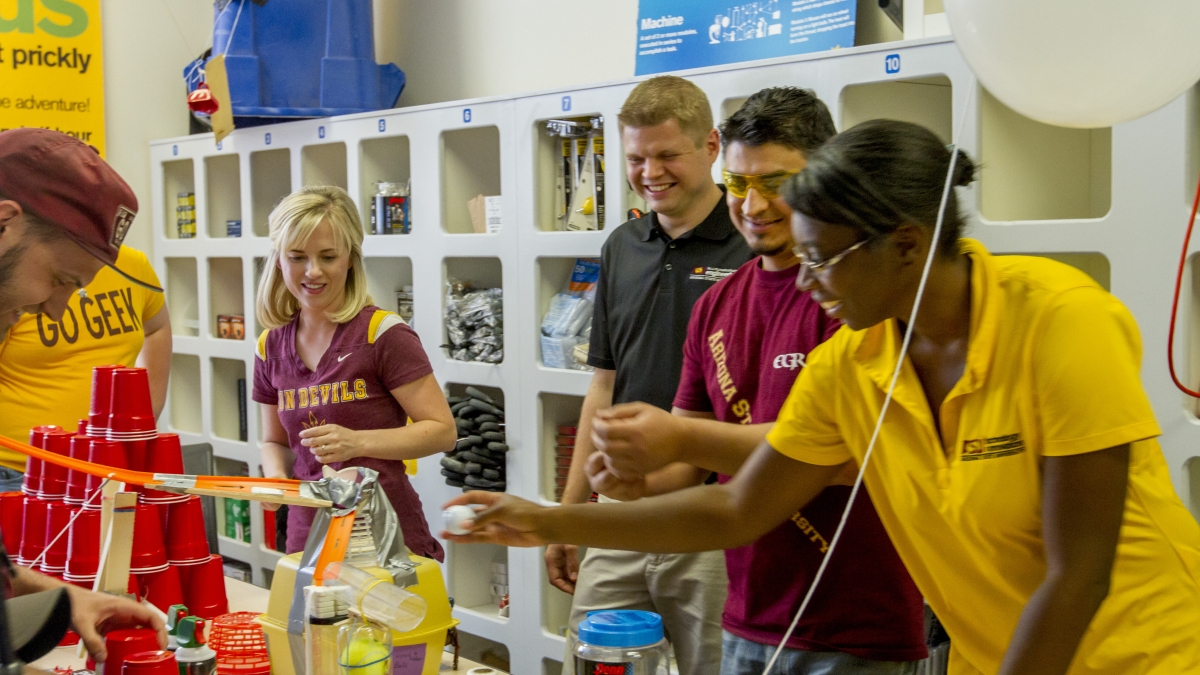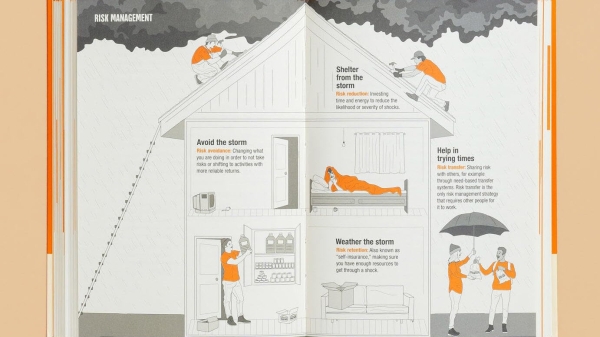ASU's Polytechnic School leading engineering education revolution

Shawn Jordan, center, assistant professor of engineering education, works on STEAM labs with his students. The program challenges student teams to apply the engineering design process to build chain-reaction machines.
Photo by: Jessica Hochreiter/ASU
Arizona State University is launching a project to revolutionize engineering education by creating a learning environment that values risk-taking, innovation and creativity among its students and faculty.
Faculty of the Polytechnic School, one of the six Ira A. Fulton Schools of Engineering, will lead the project. The school, under the leadership of director Ann McKenna, has been selected to receive one of only six $2 million grants awarded this week by the National Science Foundation (NSF).
The awards are part of NSF’s revolutionizing engineering departments program, known as RED.
“An underlying premise of RED is that department heads can be critical levers for change,” said Donna Riley, NSF program director for engineering education research. “RED focuses on transforming department structure and faculty reward systems to stimulate comprehensive change in policies, practices and curricula.”
McKenna is the principal investigator on the grant, with the team including co-investigators Samantha Brunhaver, Shawn Jordan, Nadia Kellam and Micah Lande. Their project, titled “Additive Innovation: An Educational Ecosystem of Making and Risk Taking,” will focus on the Polytechnic School’s engineering and manufacturing engineering programs, and will further develop previously tested and refined engineering education research done by the group.
According to McKenna, the project will provide the foundation to build upon successful innovations in the programs’ project-based sequence to improve the entire undergraduate experience, including technical core courses – such as mechanics and electrical theory – taught during sophomore and junior years.
The premise is that students learn complex theories better when they are actively engaged in applying the concepts to solve real-life, meaningful problems.
“Engineering schools have done a great job introducing students to project-based learning in first year courses and implementing it in senior projects, but teaching of the core curriculum has remained relatively unchanged,” McKenna said.
The Polytechnic School already focuses on an education ecosystem that empowers faculty to be agents of change in the way they teach courses, and the plan is to grow this to include all faculty members.
A defining focus of the school is the four-year project sequence. Students are to be “engineers from day one,” exemplifying what sets the Fulton Schools apart. The pioneering eProjects program brings students, faculty and industry together to find innovative solutions to real-world problems.
“We are able to attract and retain students of the highest potential because of the exemplary interdisciplinary team-based learning experiences that these projects provide,” McKenna said. “The longer-term impacts of creating a culture that values risk taking and making include attracting a new kind of student to the field of engineering. In particular, students who seek career options in which they can make a positive impact on the world, or on their specific community, who may not have traditionally considered engineering.”
The project will take place over five years. As first steps the research team is creating a business model canvas, which is a strategic management tool used by lean startups. It will identify the current engineering education ecosystem, talk to members of the faculty, students and industry partners to gather input and determine what they need to redesign and revolutionize undergraduate engineering education.
What they learn will help them create workshops for faculty where they will share tools and techniques to empower them to reinvent their own courses – part of the additive innovation philosophy. Students also will be resources for faculty in helping them learn to use tools and manufacturing equipment in the schools’ Start Up Lab they may not be familiar with.
“By empowering and rewarding risk-taking, making, and additive innovation among faculty and students we create a culture of change agents in the organization where everyone is able to modify and innovate the curriculum and learning experience, and this can lead to amazing transformation,” McKenna said.
Other universities and colleges chosen to lead this effort include Purdue University, Colorado State University, the University of North Carolina at Charlotte, the University of San Diego and Oregon State University.
More Science and technology

ASU author puts the fun in preparing for the apocalypse
The idea of an apocalypse was once only the stuff of science fiction — like in “Dawn of the Dead” or “I Am Legend.” However…

Meet student researchers solving real-world challenges
Developing sustainable solar energy solutions, deploying fungi to support soils affected by wildfire, making space education more…

Miss Arizona, computer science major wants to inspire children to combine code and creativity
Editor’s note: This story is part of a series of profiles of notable spring 2024 graduates. “It’s bittersweet.” That’s how…